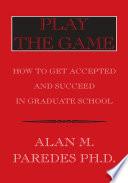
Play the Game
Auteure: Alan M. Paredes Ph.d.
Nombre de pages: 162See Publication Notes.

See Publication Notes.
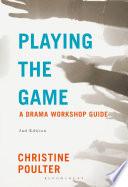
This practical guide presents a wide array of games and exercises designed to develop the players observation, imagination, presentation and self-confidence. This long-awaited new edition has been fully revised and extended, now including example workshops and an index of games to help instructors get the most out of the exercises in rehearsals, workshops and classes. Christine Poulter shares what she has learned from her students over the years, and opens up the language of the book to the worlds of youth work, healthcare, the prison service, 'customer care', management training, and secondary school education. This is an essential resource for directors, drama teachers, and students of Drama, Theatre and Performance at all levels. It will also be useful to anyone looking to improve their presentation skills.
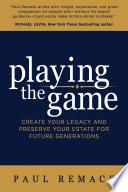
Personal wealth isn’t the only purpose of hard work and investment; it’s also important to be able to pass wealth on to one’s children and grandchildren. Wealth transfer and distribution is a game, and if played poorly—or if it is not realized a game is being played—one’s fortune can be eaten away by a combination of poor investments and unfair taxation. Written by a financial advisor with decades of experience, Playing the Game prepares people for the game of Wealth Transfer and Distribution, enabling them to pass on their fortune intact so that future generations may enjoy it.
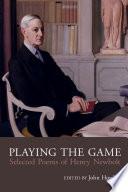
Two of Henry Newbolt’s poems, ‘Vitaï Lampada’ and ‘Drake’s Drum’, became staples of poetry anthologies and were able to be recited by every school-boy. His poetry was also deeply significant in constructing ideas around late Victorian/Edwardian imperial manliness. A consequence of this was that Newbolt became in his own time one of the best known and most popular of writers. However, in the years since his death, his work has fallen into comparative critical neglect and he has been seen as a mouthpiece for the worst aspects of his age. The aim therefore of this new edition is to place the poet’s literary work in a broader context that has hitherto not been addressed as well as offering a fresh appraisal of a significant literary figure. Aside from careful consideration of the poetry, of equal interest is Newbolt’s active public life. He contributed widely to government committees and debates on education, as well as working for the propaganda bureau in the First World War and advising on the Irish question. The links between his poetry - which spanned over three decades - and the socio-economic changes under way in the British Isles at the time are a primary theme ...
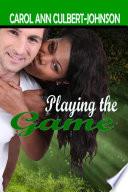
Fish and Electric is attracted to each other as they meet when Electric makes her dreams come true, and Fish is the reason. Their chemistry is explosive, but both have baggage in their lives, and the chaos begins.
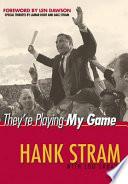
"They're Playing My Game" is a unique look at Hank Stram and his incredible 17-year career as a football coach with the Texans/Chiefs (1960-1974) and New Orleans Saints (1976-1977), and his successful second career as an analyst for CBS television and in the radio booth on "Monday Night Football."


American Studies has only gradually turned its attention to video games in the twenty-first century, even though the medium has grown into a cultural industry that is arguably the most important force in American and global popular culture today. There is an urgent need for a substantial theoretical reflection on how the field and its object of study relate to each other. This anthology, the first of its kind, seeks to address this need by asking a dialectic question: first, how may American Studies apply its highly diverse theoretical and methodological tools to the analysis of video games, and second, how are these theories and methods in turn affected by the games? The eighteen essays offer exemplary approaches to video games from the perspective of American cultural and historical studies as they consider a broad variety of topics: the US-American games industry, Puritan rhetoric, cultural geography, mobility and race, urbanity and space, digital sports, ludic textuality, survival horror and the eighteenth-century novel, gamer culture and neoliberalism, terrorism and agency, algorithm culture, glitches, theme parks, historical guilt, visual art, sonic meaning-making, and...

Three questions concerning modern legal thought provide the framework for It’s All in the Game: What should judges do? What do judges do? What can judges do? Contrasting his own answers to traditional responses and moving playfully between debates of high theory, daily practices of appellate judges, and his own enlightening analyses of significant court rulings, Allan C. Hutchinson examines what it means to treat adjudication as an engaged game of rhetorical justification. His resulting argument enables the reader to grasp more fully the practical operation, political determinants, and the transformative possibilities of law and adjudication. Taking on leading contemporary theories to explore the claim that “law is politics,” Hutchinson delineates a route toward professional, relevant, and responsible—if radical—judicial practices. After discussing the difference between foundationalist, antifoundationalist, and nonfoundationalist legal critiques, he offers a focused, unequivocal, and positive account of the advantages of operating within a nonfoundationalist framework. Although such an approach centralizes the role of rhetoric in law, Hutchinson claims that this does...

This volume presents new philosophical essays on a topic that's been neglected in most recent philosophy: games, sports, and play. Some contributions address conceptual questions about what games and sports have in common and that distinguishes them from other activities; here many take their start from Bernard Suits's celebrated analysis of game-playing in his book The Grasshopper and either elaborate it or propose an alternative to it. Other essays discuss normative issues that arise within games and sports, such as about fairness, for example in the treatment of male and female athletes. Yet others consider broader evaluative questions about the value of games and sports, which some see as enabling the display of distinctive excellences. Games, Sports, and Play includes a posthumous essay by Suits defending his claim, in The Grasshopper, that life in utopia would consist primarily in playing games. The volume's chapters approach the topic of games, sports, and play from different angles but always in the belief that there is rich terrain here for philosophical investigation.
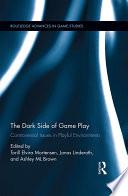
Games allow players to experiment and play with subject positions, values and moral choice. In game worlds players can take on the role of antagonists; they allow us to play with behaviour that would be offensive, illegal or immoral if it happened outside of the game sphere. While contemporary games have always handled certain problematic topics, such as war, disasters, human decay, post-apocalyptic futures, cruelty and betrayal, lately even the most playful of genres are introducing situations in which players are presented with difficult ethical and moral dilemmas. This volume is an investigation of "dark play" in video games, or game play with controversial themes as well as controversial play behaviour. It covers such questions as: Why do some games stir up political controversies? How do games invite, or even push players towards dark play through their design? Where are the boundaries for what can be presented in a games? Are these boundaries different from other media such as film and books, and if so why? What is the allure of dark play and why do players engage in these practices?
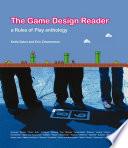
Classic and cutting-edge writings on games, spanning nearly 50 years of game analysis and criticism, by game designers, game journalists, game fans, folklorists, sociologists, and media theorists. The Game Design Reader is a one-of-a-kind collection on game design and criticism, from classic scholarly essays to cutting-edge case studies. A companion work to Katie Salen and Eric Zimmerman's textbook Rules of Play: Game Design Fundamentals, The Game Design Reader is a classroom sourcebook, a reference for working game developers, and a great read for game fans and players. Thirty-two essays by game designers, game critics, game fans, philosophers, anthropologists, media theorists, and others consider fundamental questions: What are games and how are they designed? How do games interact with culture at large? What critical approaches can game designers take to create game stories, game spaces, game communities, and new forms of play? Salen and Zimmerman have collected seminal writings that span 50 years to offer a stunning array of perspectives. Game journalists express the rhythms of game play, sociologists tackle topics such as role-playing in vast virtual worlds, players rant and...
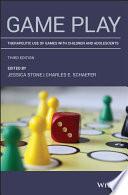
The essential guide to game play therapy for mental health practitioners The revised and updated third edition of Game Play Therapy offers psychologists and psychiatrists a guide to game play therapy’s theoretical foundations and contains the practical applications that are appropriate for children and adolescents. Game playing has proven to invoke more goal-directed behavior, has the benefit of interpersonal interaction, and can perform a significant role in the adaptation to one's environment. With contributions from noted experts in the field, the third edition contains information on the time-tested, classic games and the most recent innovations and advances in game play approaches. Game Play Therapy’s revised third edition (like the previous editions) continues to fill a gap in the literature by offering mental health practitioners the information needed to understand why and how to use this intervention effectively. The contributors offer advice for choosing the most useful games from the more than 700 now available and describe the fundamentals of administering the games. This important updated book: Contains material on the recent advances in the field including...
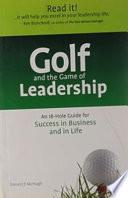
McHugh, a former executive with General Motors and Owens-Illinois, believes that golf is a perfect analogy for the corporate boardroom game. By transferring the strategies that work on the course to the office, chances are one will be able to stand out as a leader. The best golfers are passionate about the game and are willing to put in hours of practice. Similarly, according to the author, effective leaders are zealous in their convictions that their behavior will motivate and help others to succeed as well. The chapters - for each of 18-holes of a round of golf - feature leadership principles such as "Focus," "Courage," "Responsibility" and "Recognize Positive Results." Each chapter, offers numerous anecdotes about both golf and the business world. The book does not attempt to teach or train people to be leaders. The focus instead is to help you in your efforts to learn how to lead more effectively.

On May 21, 2004, playing against New Zealand, Andrew Strauss wrote his name into the record books when he became only the fourth batsman to score a century at Lord's on his Test debut. He made 112 in the first innings and was only denied a historical second hundred when he was run out on 83 by Nasser Hussain. England went on to beat New Zealand 3-0 before returning to headquarters to welcome the West Indies, Strauss scoring 137 as the hosts laid the foundations for another whitewash. He then raised the bar again when touring the country of his birth, making three centuries in England's first win in South Africa in 40 years. This sensational start to his international career has ensured that he has been celebrated as a world-class opening batsman, and was voted Wisden's Cricketer of the Year 2005. In THE STORY SO FAR, Andrew Strauss looks back on his early cricketing days and astounding first year in Test cricket, and gives the inside story on what it is like to be part of an incredible England side fighting to overtake Australia as the number one cricketing nation. THE STORY SO FAR also includes his personal story of how England beat Australia in the 2005 Ashes Series, in which he ...
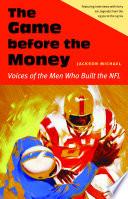
"Oral history from players and coaches detailing the NFL from the late 1930s through the 1970s"--
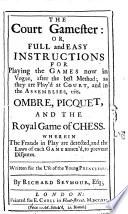

The Game Boy Encyclopedia is the sixth book in Scottish author and journalist Chris Scullions critically-acclaimed series of video game encyclopedias. There are few video game systems as iconic and important as the Nintendo Game Boy. Released in 1989, the handhelds humble green-tinted display allowed for a low-cost portable console that won over players where it mattered most: the quality of its games. From huge early successes like the iconic Tetris and Super Mario Land to its revival years later with the groundbreaking Pokémon games, the Game Boy stands proudly as one of the greatest gaming systems ever. Its 1998 successor, the Game Boy Color, addressed the one main weak spot in the Game Boys armor and offered full-color games. Combined, nearly 120 million Game Boy and Game Boy Color handhelds were sold worldwide, with both models playing a huge role in so many childhoods (and adulthoods). This book contains every game released in the west for both handhelds: around 580 on the Game Boy and around 560 on the Game Boy Color. With around 1,150 games covered in total, screenshots and trivia factoids for every single title and a light-hearted writing style designed for an...
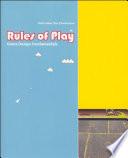
An impassioned look at games and game design that offers the most ambitious framework for understanding them to date. As pop culture, games are as important as film or television—but game design has yet to develop a theoretical framework or critical vocabulary. In Rules of Play Katie Salen and Eric Zimmerman present a much-needed primer for this emerging field. They offer a unified model for looking at all kinds of games, from board games and sports to computer and video games. As active participants in game culture, the authors have written Rules of Play as a catalyst for innovation, filled with new concepts, strategies, and methodologies for creating and understanding games. Building an aesthetics of interactive systems, Salen and Zimmerman define core concepts like "play," "design," and "interactivity." They look at games through a series of eighteen "game design schemas," or conceptual frameworks, including games as systems of emergence and information, as contexts for social play, as a storytelling medium, and as sites of cultural resistance. Written for game scholars, game developers, and interactive designers, Rules of Play is a textbook, reference book, and theoretical...

Collects more than 1,400 English-language proverbs that arose in the 20th and 21st centuries, organized alphabetically by key words and including information on date of origin, history and meaning.
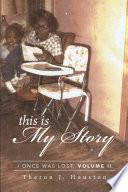
In This Is My Story: I Once was Lost, Volume II, Theron J. Houston continues with an anthology of his life. In this book, you will see how God has become an essential part of his life and his discovery of the power of prayer. When your life appears to be out of order and out of control, we all still have a God that is a God of order, and he is still in control. This book will not only make you think but it will inspire you and inform you that our Heavenly Father has a divine purpose for your life.
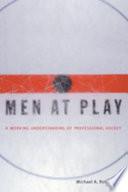
After a year spent documenting the working life and daily routines of players for an American Hockey League team, Michael Robidoux found that most peoples' perceptions of hockey players' lives as romantic and glamorized are unrealistic. The majority of professional hockey players work in a closed and discriminatory environment in the lower tiers of hockey on semi-professional teams.
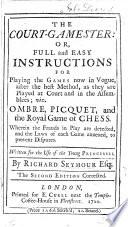

Playing the Archive: From the Opies to the digital playground reflects on a major study inspired by the work of citizen scholar folklorists Iona and Peter Opie. In the 1950s and 1960s, the Opies built a vast collection of children’s street and playground games, stories, sayings, rhymes, beliefs and habits as told to them by children all over Britain. These accounts are now held in the Bodleian Libraries and were the focus and inspiration for the new study. New stories and games were gathered from today’s children, and comparisons drawn between play experiences at these two different points in time. The book explores how the Opie Archive was made publicly available online by the project through digital images, innovative cataloguing and playful digital media interfaces, such as a red telephone kiosk at the Young V&A. Chapters analyse the ethnographic strands of the project, collecting evidence of new and old forms of play on today’s playgrounds using state-of-the-art digital methods. The book proposes new ways of thinking about changes and adaptations to play and games, theorising on the workings of interfaces, repertoires and archives. It also considers the Opies’ ways of...
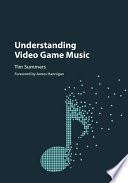
Understanding Video Game Music develops a musicology of video game music by providing methods and concepts for understanding music in this medium. From the practicalities of investigating the video game as a musical source to the critical perspectives on game music - using examples including Final Fantasy VII, Monkey Island 2, SSX Tricky and Silent Hill - these explorations not only illuminate aspects of game music, but also provide conceptual ideas valuable for future analysis. Music is not a redundant echo of other textual levels of the game, but central to the experience of interacting with video games. As the author likes to describe it, this book is about music for racing a rally car, music for evading zombies, music for dancing, music for solving puzzles, music for saving the Earth from aliens, music for managing a city, music for being a hero; in short, it is about music for playing.
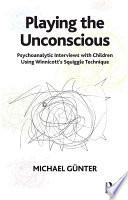
This book offers a most interesting view of the application of the Winnicott squiggle game outside the context of therapeutic consultations. It concentrates on describing the inner mechanisms for coping which came to light in the psychoanalytical squiggle interviews with the children.


When people are at their lowest moment, even touching the bottom, God is their only strength. They must decide to push off by surrendering their own strength and allowing God to bring them through this life of games. (Social Issues)

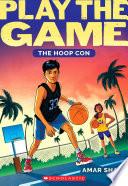
YOU CAN'T WIN IF YOU DON'T PLAY Raam Patel is eager to prove himself ever since he didn’t make the middle school’s basketball team. So, when Hoop Con comes to town he is determined to be there and take his shot. His big moment proves to be unforgettable... but not in the way he’d hoped. Raam gets schooled by the camp’s golden boy right in front of his NBA idol. To make matters even worse, this fail goes viral. Raam is used to being the underdog, but becoming the newest meme might be something even he can’t overcome alone. He skips town in an effort to lay low and take a break from basketball. However, he’s met with new courts, fresh kicks, and tough new competition, changing his whole outlook on the game. Raam has the skills, but now it’s time to unlock the mental game.
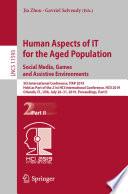
This two-volume set LNCS 11592 and 11593 constitutes the refereed proceedings of the 5th International Conference on Human Aspects of IT for the Aged Population, ITAP 2019, held in July 2019 as part of HCI International 2019 in Orlando, FL, USA. HCII 2019 received a total of 5029 submissions, of which 1275 papers and 209 posters were accepted for publication after a careful reviewing process. The 86 papers presented in these two volumes are organized in topical sections named: Design with and for the Elderly, Aging and Technology Acceptance, Aging and the User Experience, Elderly-Specific Web Design, Aging and Social Media, Games and Exergames for the Elderly, Ambient Assisted Living, Aging, Motion, Cognition, Emotion and Learning.
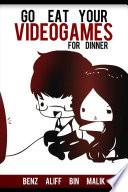
This book is aimed to help people understand video games addicts and give a way to understand them and communicate with them. It also gives steps and advice on how to stop being a video games addict without sacrificing the game.
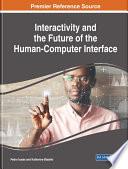
The usability and design in technological systems is imperative due to their abundance in numerous professional industries. Computer interfaces have seen significant advancement in their design and development as they have become an integral part of today’s society. As humans continue to interact with technology on a regular basis, it is essential for professionals, professors, and students to keep pace with innovative research on interface design and the various applications interfaces have in professional fields. Interactivity and the Future of the Human-Computer Interface is a collection of innovative research on the development and application of interfaces in today’s modern society and the generational implications for design of human and technology interaction. While highlighting topics including digital gaming, augmented reality, and e-learning, this book is ideally designed for educators, developers, web designers, researchers, technology specialists, scientists, and students seeking current research on modern advancements and applications in human-computer interaction.
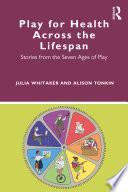
Play for Health Across the Lifespan uses case studies to explore the impact of play and creativity on health and wellbeing throughout the lifecycle. While play at the start of life influences future development, the authors show play also has a role in improving prospects for health and wellbeing in adulthood and later life. A relational approach to health and wellbeing emphasizes the dynamic, mutually influential relationship between individual development and the changing contexts of our lives. Our personal play history is one feature of this dynamic process, and this book explores how the experience of play throughout the life course sculpts and resculpts the shape of our lives: our physical health, our mental wellbeing, and our relationship to the people and the world around us. Storytelling has been used since the beginning of time to communicate important life lessons in an engaging way. Taking inspiration from Shakespeare’s ‘Seven Ages of Man’, the book uses a case-story approach to differentiate the stages of development and to present evidence for how play and playful experiences impact on health and wellbeing from birth to the end of life in the context of temporal ...
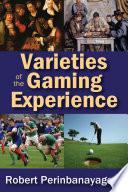
The games that human societies devised over the centuries can be considered one of the most comprehensive and fertile symbolic systems ever created by human ingenuity. In all societies, members feel compelled to interact and communicate with each other as much as possible. As linguistic creatures, humans use language to establish social and interpersonal contacts. Games are a device to enable such connections. Robert Perinbanayagam examines how players value games. He assesses games as systems that embody metaphysics and pragmatic action. He then examines various religious ideas and how participants reference respective approaches to game playing. Perinbanayagam argues that games are forms of activity in which the human agent as an actor engages with others in various interactional situations. Such engagement creates dramas in which agents assume identities, give play to emotions and enrich their selves. He also examines the issue of game writing, particularly how selected writers have used game structures as narrative devices in their work.
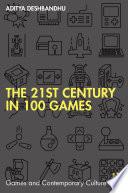
The 21st Century in 100 Games is an interactive public history of the contemporary world. It creates a ludological retelling of the 21st century through 100 games that were announced, launched, and played from the turn of the century. The book analyzes them and then uses the games as a means of entry to examine both key events in the 21st century and the evolution of the gaming industry. Adopting a tri-pronged perspective — the reviewer, the academic, and an industry observer — it studies games as ludo-narratological artefacts and resituates games in a societal context by examining how they affect and are engaged with by players, reviewers, the gaming community, and the larger gaming industry. This book will be a must read for readers interested in video games, new media, digital culture (s), culture studies, and history.

This book talks about the importance of social mechanics in games and how these mechanics evolved over time to accommodate new technologies and new social contexts. It looks at the innovation happening in the field of new-age social games, discussing in detail what has been learnt from designing for the younger generation, how these findings can inform game design philosophy and how this can be applied to game development more broadly. Part 1 of this book provides a brief history of games as social interaction and discusses the differences between online and offline social gaming. Part 2 covers Facebook social gaming and design lessons from first-generation social games. Part 3 introduces design philosophies for the hyper-social genre and includes an important chapter on design ethics. Finally, Part 4 looks ahead to the future of social games and how game designers can incorporate learnings from this book in their own work. This book will appeal to game designers and students of game design looking to learn how to apply learnings from social game design in their own games.
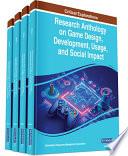
Videogames have risen in popularity in recent decades and continue to entertain many all over the world. As game design and development becomes more accessible to those outside of the industry, their uses and impacts are further expanded. Games have been developed for medical, educational, business, and many more applications. While games have many beneficial applications, many challenges exist in current development processes as well as some of their impacts on society. It is essential to investigate the current trends in the design and development of games as well as the opportunities and challenges presented in their usage and social impact. The Research Anthology on Game Design, Development, Usage, and Social Impact discusses the emerging developments, opportunities, and challenges that are found within the design, development, usage, and impact of gaming. It presents a comprehensive collection of the recent research, theories, case studies, and more within the area. Covering topics such as academic game creation, gaming experience, and violence in gaming, this major reference work is a dynamic resource for game developers, instructional designers, educators and administrators ...
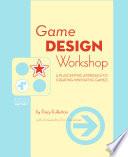
Master the craft of game design so you can create that elusive combination of challenge, competition, and interaction that players seek. This design workshop begins with an examination of the fundamental elements of game design; then puts you to work in prototyping, playtesting and redesigning your own games with exercises that teach essential design skills. Workshop exercises require no background in programming or artwork, releasing you from the intricacies of electronic game production, so you can develop a working understanding of the essentials of game design.
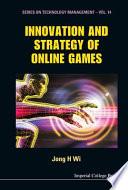
This book is the first study to survey, over a ten-year period, innovations and the industrial formation process of online game business, and global strategies of major Korean online game companies. It focuses on the innovative factors which made the Korean online game industry grow tremendously and successfully to gain competitiveness in the global game industry. These include: the main factors stimulating online game business; virtual business created by online games as well as an examination of the role of the Korean government at the beginning and developmental period of the online gaming business.
Plus d'informations